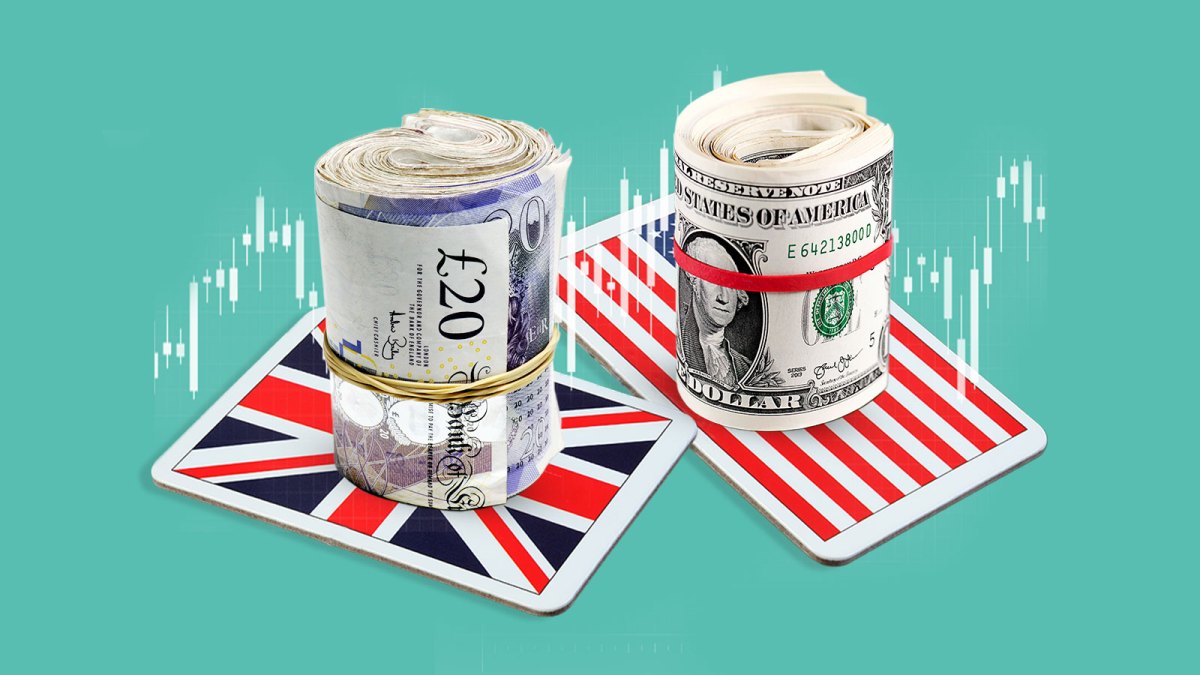Standing side by side with Sir Keir Starmer at Chequers, President Trump was characteristically bombastic about America’s economic prowess under his leadership. The United States, he said, was doing “better than it has ever done” with more money, more jobs and more investment than ever before.
Saving his host’s blushes, he was uncharacteristically diplomatic about the comparative economic performance of the UK.
Because data across a range of indicators shows just how far the UK’s economy has fallen behind the US, in living standards and prosperity, since the global financial crisis in 2008.

The leaders discuss their technology deal at Chequers
LEON NEAL/GETTY IMAGES
In 2007 nominal GDP per person was $48,000 in the US while in the UK it was about $49,000. America was just ahead when the figures were adjusted for currency differences and the cost of living.
Since then, after a series of shocks to the economy including Brexit, Covid and the war in Ukraine, the British economy has in effect flat-lined. The average increase in per person GDP has been only about $2,600 over almost two decades.
In contrast, the US economy has charged ahead, with per capita GDP standing at $85,809. It barely dipped during the financial crisis or indeed Covid and over the past five years has easily surpassed long-term historical trends.
Since 2019, the UK’s GDP has risen only 0.7 per cent while the American equivalent stands at 9.2 per cent. The question is why — and whether such growth is merely a manifestation of the US elite making billions while ordinary Americans are little better off than they were before.
For those on the left the answer is little cause for comfort. Earnings for those with an average salary this year were a little over $62,000 in America. In the UK the most recent official annual statistics show a median earning of £37,430 for full-time workers — slightly over $50,000.
• UK economy shows zero growth in July
The bottom 10 per cent of workers in the US had an average hourly wage of about $14.59, close to the the minimum wage in the UK of £12.21 ($16.50). Indeed if the UK were the 51st American state it would be battling it out with Mississippi for the dubious title of being the poorest in the union.
As Neil Shearing, group chief economist at Capital Economics, puts it: “It is definitely not the case that the tech bros are making billions while leaving everyone else behind. There is something much more fundamental going on.”
The first thing to say is that this is not a peculiarly British phenomenon. European countries have all suffered similar relative declines in per capita GDP compared with America.
But the UK economy has grown slightly more slowly than both France and Germany since 2008, after adjusting for the cost of living and the prices of goods and services in different countries.
Shearing said the UK’s relative poor performance was due to two main factors. The first was that it had been faster than some countries in imposing austerity measures after the financial crisis, which had weighed on growth. It also took a hit from Brexit — which is believed to have reduced GDP growth by anywhere between 1 and 4 per cent on where it would otherwise have been, depending on which modelling is used.
But the bigger factor behind the UK’s relative economic decline in comparison to America is productivity — roughly defined as a ratio of gross domestic product (GDP) to the number of hours worked.
And here the UK has been in the slow lane.
A recent report from the Centre for Economic Performance at the London School of Economics found that between 2011 and 2019 productivity grew by 0.5 per cent a year in the UK compared with 0.8 per cent annually in the US.

Workers at Nissan’s factory in Sunderland, where production was down by a third in June, compared with the same point last year
OWEN HUMPHREYS/PA WIRE
Had pre-2007 productivity trends in the UK continued, British workers would be 16 per cent more productive today than they are, translating directly into higher wages and improved living standards.
James Smith, research director of the Resolution Foundation, said this fall could be directly linked to under-investment over many years in the machines and technology that make workers more productive.
This is underlined by the foundation’s report which found that businesses’ spending on software has risen twice as fast in the US (up 42 per cent from 2017-19 to 2021-23) than in the UK (up 17 per cent).
But this is not the only problem. America’s oil and gas boom has helped shield the US economy from a spike in prices as a result of President Putin’s invasion of Ukraine — and given US manufacturers a competitive advantage.
Industrial gas prices in the UK rose by 158 per cent between 2019 and 2023, and electricity prices by 124 per cent. Meanwhile, both American equivalents rose only by 21 per cent.
The question is what happens next — and whether the UK can close this gap.
From the government’s perspective, part of the rationale behind the tech partnership signed by Trump and Starmer during this week’s state visit is to try to piggy-back on US dominance in areas such as AI — to boost domestic GDP growth while at the same time instigating supply-side reforms to make British businesses more efficient.
The aim, as Labour pledged at the last election, is to make Britain the fastest growing economy in the G7. But that looks like a tall order — and even if it works it will take many years to close the yawning gap with America built up during our recent past.

